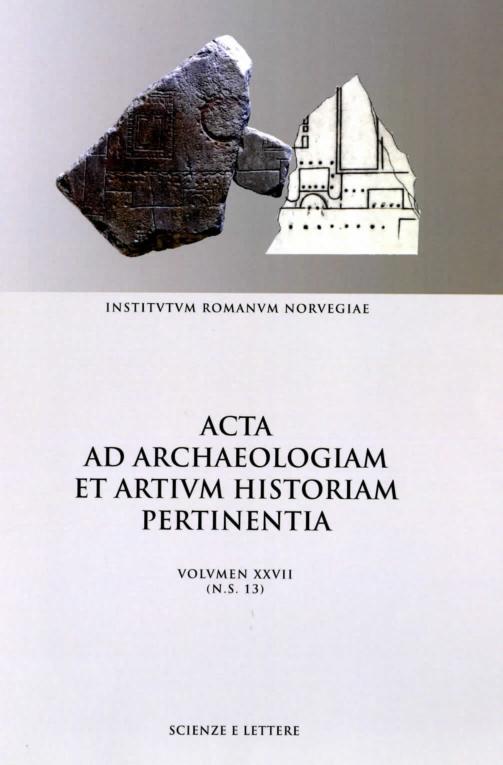The Theater of Pompey in Rome: the Archeological Evidence, the Architecture and Destruction
DOI:
https://doi.org/10.5617/acta.5805Abstract
"Celebrated by the writers of classical antiquity for its size, splendor, and amenities, the Theater of Pompey has almost completely disappeared from modern Rome. Yet, its site has been known for centuries (probably since antiquity). Modern buildings – particularly Palazzo Pio at Campo de’ Fiori – preserve its outline, and various fragments of its surviving structure allow a reasonably accurate reconstruction of its original appearance.
With a diameter of 156.80 m the semi-circular cavea had a four-story facade like that of the Theater of Marcellus or the Colosseum. Some fragments of the marble seats survive, and, from the schematic plan on the Severan Forma Urbis and modern archaeological reports, we can restore the interior facade of the three-story Domitianic scaenae frons with its columns of imported polychrome marbles and statues. The Forma Urbi also preserves plans of some of the rooms around the great peristyle behind the scaenae frons, and a nineteenth-century excavation gives us the intercolumniations, diameters, and materials for its colonnade.
Why did this monumental structure not survive? Much seems to have been destroyed in an earthquake: the rubble from that disaster underlies the pavements of Palazzo Pio’s two courtyards raising them nearly 2 m above the level of the adjacent Via di Grotta Pinta. The foundations and walls of medieval and later houses incorporated and hid the rest of the theater's structure.
"
Issue
Section
License

This work is licensed under a Creative Commons Attribution-NonCommercial 4.0 International License.
Authors who publish with this journal agree to the following terms:
- Authors retain copyright and grant the journal right of first publication with the work simultaneously licensed under a Creative Commons Attribution License that allows others to share the work with an acknowledgment of the work's authorship and initial publication in this journal.
- Authors are able to enter into separate, additional contractual arrangements for the non-exclusive distribution of the journal's published version of the work (e.g., post it to an institutional repository or publish it in a book), with an acknowledgement of its initial publication in this journal.
- Authors are permitted and encouraged to post their work online (e.g., in institutional repositories or on their website) prior to and during the submission process, as it can lead to productive exchanges, as well as earlier and greater citation of published work (See The Effect of Open Access).





